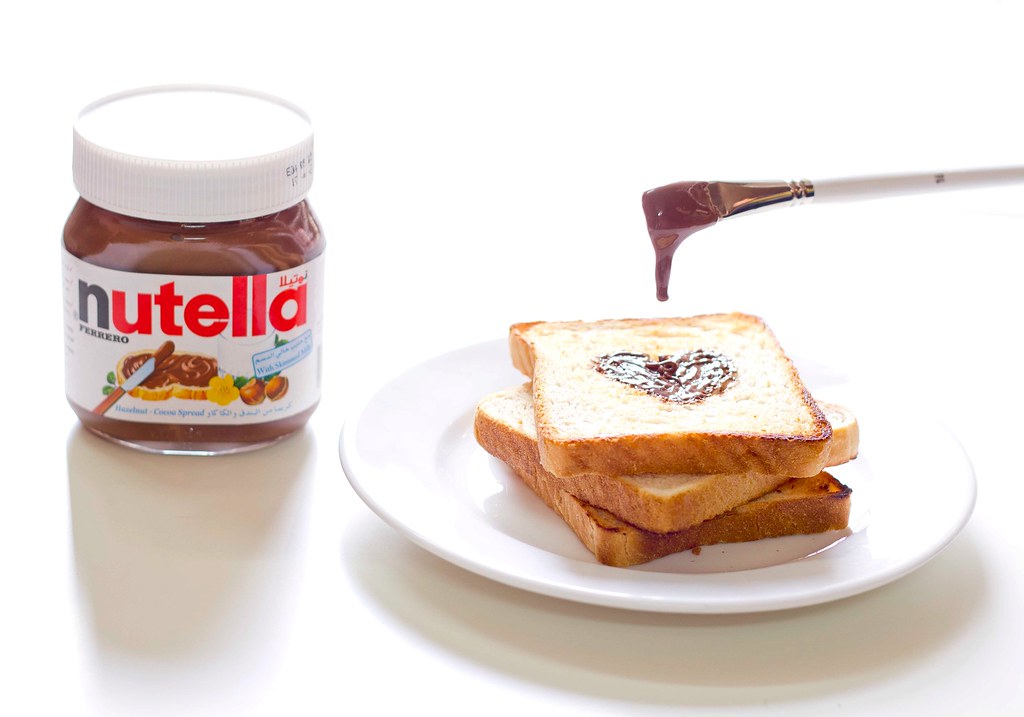How Long Does to Properly Store Sushi last in the Fridge to Extend Its Shelf Life
Welcome to our ultimate guide on sushi freshness! If you’ve ever wondered how long sushi can last in the fridge, you’ve come to the right place. Sushi is a popular and delicious dish that originated in Japan, consisting of rice seasoned with vinegar and topped with various ingredients, such as raw or cooked fish, vegetables, and seaweed. However, due to its raw or partially cooked nature, sushi requires proper storage to maintain its quality and ensure food safety.
So, how long does sushi last in the fridge? The shelf life of sushi largely depends on the freshness of the ingredients used and how it is stored. On average, sushi can last in the fridge for up to 24 hours. However, for the best taste and quality, it is recommended to consume sushi within a few hours of preparation. To extend the shelf life of sushi, there are a few factors to consider, such as the type of sushi, temperature, and storage techniques.
When it comes to different types of sushi, there are some variations in their shelf life. For example, sushi made with raw fish, such as sashimi or nigiri, is more perishable and should be consumed on the same day it is prepared. On the other hand, sushi rolls with cooked ingredients, like California rolls or tempura rolls, may last a bit longer in the fridge, usually up to 48 hours. It is important to note that these time frames are general guidelines and may vary depending on factors like the freshness of the ingredients and the hygienic preparation.
Understanding the Shelf Life of Sushi
Sushi is a popular Japanese dish that consists of vinegared rice, seafood, and vegetables. It is loved by many for its unique flavors and delicate textures. However, like any perishable food, sushi has a limited shelf life. Understanding how long sushi lasts in the fridge is essential to ensure food safety and preserve its freshness.
The shelf life of sushi can vary depending on several factors such as the ingredients used, storage conditions, and preparation methods. Typically, sushi is best consumed within 24 hours of preparation to guarantee its quality and taste. It is considered freshest when eaten immediately after being made by a skilled sushi chef.
To extend the shelf life of sushi, it is important to handle and store it properly. Sushi should be stored in a refrigerator at a temperature between 32°F (0°C) and 41°F (5°C) to prevent the growth of harmful bacteria. It is recommended to place sushi in an airtight container or wrap it tightly with plastic wrap to maintain its moisture and prevent it from becoming dry.
However, even when stored correctly, sushi has a limited shelf life due to its raw nature. Raw seafood, such as fish used for sushi, can spoil quickly and may be a breeding ground for bacteria if not consumed within a short period. Additionally, the quality of the sushi may degrade over time, as the flavors and textures become less desirable.
When determining the freshness of sushi, it is important to use your senses. Look for any signs of discoloration, such as dull or faded colors, as this could indicate spoilage. The smell of the sushi should be fresh and pleasant, without any strong or fishy odors. Lastly, the texture of the sushi should be firm and not mushy or slimy.
In conclusion, sushi has a relatively short shelf life and is best consumed within 24 hours of preparation. Proper storage and handling techniques can help prolong its freshness, but it is important to use your senses to determine if it is still safe to eat. By understanding the shelf life of sushi, you can enjoy this delicious dish while ensuring your health and food safety.
Factors Affecting the Freshness of Sushi
Sushi, a popular Japanese cuisine, is known for its delicate flavors and fresh ingredients. The freshness of sushi is crucial to ensuring its taste and quality. Several factors can impact the freshness of sushi, including:
1. Quality of Ingredients
The primary factor that affects the freshness of sushi is the quality of its ingredients. Fresh seafood, such as fish and shellfish, is the highlight of sushi, and using high-quality, sushi-grade fish is essential. Sushi chefs rely on suppliers who provide fresh, premium-grade seafood to maintain the freshness and taste of their sushi.
2. Handling and Storage
The way sushi is handled and stored can significantly impact its freshness. Sushi should be prepared and served as soon as possible to preserve its quality. Improper handling, such as leaving sushi at room temperature for extended periods, can cause bacterial growth and spoilage. Additionally, sushi should be stored in a cool environment, ideally in a refrigerator or chilled display case, to maintain its freshness.
3. Time Since Preparation
Freshly prepared sushi is always the best choice. As time passes, the quality of sushi can deteriorate. The longer sushi sits, the more its flavors may change, and the texture may become less desirable. Sushi should be consumed within a day of preparation to ensure its freshness and taste.
In conclusion, the freshness of sushi depends on several factors, including the quality of ingredients, handling and storage practices, and the time elapsed since its preparation. By considering these factors, you can enjoy sushi at its freshest and savor the authentic flavors it offers.
Storing Sushi Properly in the Fridge
Properly storing sushi in the fridge is crucial to maintain its freshness and preserve its quality. Here are some guidelines to help you store sushi correctly:
1. Use airtight containers
When storing sushi in the fridge, it is important to use airtight containers to prevent air and moisture from getting in. Exposure to air can make the sushi dry and reduce its flavor. Airtight containers also help to prevent the sushi from absorbing any odors from other food items in the fridge.
2. Keep it at a consistent temperature
Sushi should be stored at a consistent temperature of around 40°F (4°C) to keep it fresh. Avoid storing it in the door of the fridge as the temperature can fluctuate when the door is opened frequently. Instead, place it on a shelf towards the back of the fridge where the temperature is more stable.
3. Don’t store it for too long
Sushi is best consumed fresh and should ideally be eaten within 24 hours of purchase. If you need to store it for a longer period, make sure to eat it within 48 hours at most. Sushi that has been stored for too long can become less flavorful and the texture may change.
To keep track of when you stored the sushi, you can use labels or markers to mark the date on the container. This will help you avoid consuming sushi that has been stored for too long.
4. Avoid freezing sushi
While some types of sushi can be frozen, it is not recommended as it can affect the texture and flavor. Freezing sushi can make it mushy and may cause the rice to become hard. It is best to consume sushi fresh or store it in the fridge for a short period of time.
| Do: | Don’t: |
|---|---|
| Use airtight containers | Store sushi for too long |
| Keep it at a consistent temperature | Freeze sushi |
Tips for Extending the Lifespan of Sushi in the Fridge
If you want to enjoy your sushi for as long as possible, there are a few key tips to keep in mind:
| 1. | Wrap it tightly: | When storing sushi in the fridge, be sure to wrap it tightly in plastic wrap or put it in an airtight container. This will prevent any air from getting in and drying out the rice, which can lead to a less enjoyable texture. |
| 2. | Keep it cold: | Make sure your fridge is set to a temperature of 40°F (4°C) or below. A colder fridge will help slow down the growth of bacteria and keep your sushi fresh for a longer period. |
| 3. | Don’t keep it for too long: | Sushi is best consumed within 24 hours of being made. While it can technically be kept in the fridge for up to 3 days, the quality will start to degrade after the first day. It’s always best to enjoy sushi as soon as possible for the best taste and texture. |
| 4. | Separate the fish: | If your sushi includes raw fish, it’s a good idea to separate it from the rice before storing. This will prevent the fish from making the rice soggy and minimize the risk of cross-contamination. |
| 5. | Be cautious with leftovers: | If you have leftover sushi that has been sitting out at room temperature for more than 2 hours, it’s best to discard it. Bacteria can grow rapidly at room temperature and pose a risk to your health. |
By following these tips, you can extend the lifespan of your sushi in the fridge and enjoy it for longer without compromising taste or quality. Remember, freshness is key when it comes to sushi, so always use your best judgment when deciding whether or not to consume leftovers.
Signs that Sushi has Gone Bad
If you’re unsure whether your sushi is still safe to eat, there are a few telltale signs that it may have gone bad:
- Unpleasant odor: Fresh sushi should have a clean, seaweed-like smell. If it smells sour, rotten, or fishy, it’s best to discard it.
- Discolored rice: The rice in sushi should be firm and white or slightly yellowish. If the rice appears slimy, discolored, or has a strange texture, it’s a sign that bacteria may have started to grow.
- Moldy appearance: If you notice any mold growing on the sushi, it’s a definite sign of spoilage. Mold can be harmful to your health, so it’s important to discard the sushi immediately.
- Unusual texture: Fresh sushi should have a firm and slightly chewy texture. If the texture feels slimy, mushy, or overly soft, it’s an indication that the fish is no longer safe to consume.
- Off-tasting fish: If the fish in your sushi tastes sour, bitter, or has any other strange flavor, it’s best not to take the risk and discard the sushi.
Remember, it’s always better to be safe than sorry when it comes to consuming raw fish. If you have any doubts about the freshness of your sushi, it’s best to err on the side of caution and throw it away.
Proper Disposal of Expired Sushi
When sushi passes its expiration date, it is important to dispose of it properly to avoid any potential health risks. Here are the steps you should follow:
- Check the expiration date: Before disposing of sushi, check the packaging or label to determine its expiration date. Expired sushi should never be consumed.
- Separate the sushi: If you have different types of sushi, separate them. This will make the disposal process easier and prevent cross-contamination.
- Wrap in plastic bags: Place each type of sushi in a separate plastic bag. This will help contain any potential odors and prevent leakage.
- Seal the bags: Securely seal the bags to prevent any air from entering or escaping. This will help slow down the decomposition process and reduce foul odors.
- Place in a sealed container: Transfer the sealed bags of sushi to a sealed container. This will provide an additional layer of protection and prevent any potential leakage in the refrigerator.
- Label the container: Clearly label the container with the date of disposal. This will help you keep track of when the sushi should be thrown out.
- Dispose in the trash: Place the sealed container in the trash bin. Do not dispose of it in the sink or toilet, as it can cause blockages and other plumbing issues.
By following these steps, you can ensure that expired sushi is properly disposed of, minimizing any risks to your health and preventing any unpleasant odors in your home. Remember, it is always better to prioritize food safety and avoid consuming expired sushi.
“FAQ:” How long does sushi last in the fridge
How should you store sushi to maintain its freshness, especially when it contains raw fish or seafood?
Sushi containing raw fish or seafood should be refrigerated to keep it fresh. Proper storage helps prevent the growth of bacteria and ensures the safety of consuming raw ingredients.
Can sushi rice be kept in the refrigerator, and what precautions should be taken when storing it for an extended period?
Sushi rice can be refrigerated, but it’s essential to store it properly to prevent it from drying out. Cover the rice with a damp cloth or plastic wrap to maintain its moisture when storing it for an extended period.
Is it safe to keep sushi with raw fish for a week in the fridge, and what factors should be considered when determining its shelf life?
It is not recommended to keep sushi with raw fish for a week in the fridge. Raw fish has a limited shelf life, and for optimal safety and taste, sushi with raw ingredients should be consumed shortly after preparation.
How can you store vegetarian sushi to ensure its freshness, and does it have a longer shelf life compared to sushi with raw fish?
Vegetarian sushi can be stored in the refrigerator to maintain its freshness. Typically, vegetarian sushi has a longer shelf life than sushi containing raw fish, but it’s essential to follow proper storage guidelines for the best quality.
When storing sushi that contains raw fish or cooked seafood, what measures can be taken to avoid cross-contamination and ensure food safety?
To avoid cross-contamination and ensure food safety, store sushi with raw fish separately from cooked seafood. Use airtight containers and keep them on different shelves in the refrigerator to prevent the transfer of flavors and potential contamination.
How can you safely store leftover sushi to ensure its freshness, especially if it contains raw fish or seafood?
Leftover sushi, especially varieties with raw fish or seafood, should be refrigerated promptly in an airtight container to maintain freshness and prevent bacterial growth.
What precautions should be taken to keep cooked sushi fresh overnight, and how long can it last when stored properly?
To keep cooked sushi fresh overnight, store it in the refrigerator and ensure proper sealing to prevent drying. Cooked sushi can last for up to one to two days when stored correctly.
Are there specific signs to look for to determine if sushi has gone bad, and what should be done if you notice any such signs?
Signs that sushi may have gone bad include an off smell, changes in color, or a slimy texture. If you notice any of these signs, it is advisable not to consume the sushi and discard it to avoid the risk of foodborne illness.
How long can sushi leftovers last before going bad, and what factors contribute to the shelf life of leftover sushi?
Leftover sushi can last for up to one to two days when stored properly. Factors such as the type of sushi, ingredients used, and storage conditions contribute to its shelf life.
When storing raw fish sushi, how can you prevent it from drying out in the refrigerator, and what measures ensure its quality when consumed later?
To prevent raw fish sushi from drying out, cover it tightly with plastic wrap or place it in an airtight container before refrigerating. Ensuring proper sealing helps maintain the quality and texture when consumed later.
Is it safe to eat leftover sushi that has been stored in the fridge overnight, and what precautions should be taken before consuming it?
Leftover sushi stored in the fridge overnight is generally safe to eat if stored properly. However, it’s essential to check for any signs of spoilage and ensure that it has been stored at a safe temperature.
How long can sushi remain in the refrigerator before it is no longer safe to eat, and what factors influence its freshness over time?
Sushi can generally remain in the refrigerator for up to one to two days before it may no longer be safe to eat. Factors such as the ingredients, temperature, and proper sealing impact its freshness over time.
Are there specific measures to tell if sushi has gone bad, and what steps can be taken to ensure the safety of consuming sushi leftovers?
Signs that sushi may have gone bad include changes in smell, color, or texture. To ensure the safety of consuming sushi leftovers, carefully inspect for these signs before eating.
How should different kinds of sushi, including homemade sushi, be stored in the fridge to maintain their quality?
Different kinds of sushi, including homemade varieties, should be stored in airtight containers or tightly wrapped in plastic to prevent exposure to air and maintain their quality in the refrigerator.
Is there a reason why sushi, particularly those with raw fish like salmon sashimi, should be eaten within a day, and what risks are associated with consuming spoiled sushi?
Sushi, especially varieties with raw fish like salmon sashimi, should be eaten within a day to ensure freshness and minimize the risk of foodborne illness associated with consuming spoiled or improperly stored sushi.
What precautions should be taken when handling raw sushi to ensure food safety, especially when preparing sushi without cooking the fish or seafood?
When handling raw sushi, particularly varieties without cooking the fish or seafood, it’s crucial to follow strict hygiene practices, use fresh, high-quality ingredients, and ensure proper refrigeration to minimize the risk of foodborne illnesses.
How can you enjoy sushi without raw fish, and what are some popular alternatives or vegetarian options for those who prefer sushi without raw ingredients?
Sushi without raw fish offers various alternatives, including vegetarian options like avocado rolls, cucumber rolls, or vegetable sushi. These alternatives provide a delicious and satisfying experience for those who prefer non-raw sushi.
What factors contribute to the taste and texture of a piece of sushi, particularly when it comes to varieties without raw fish?
The taste and texture of a piece of sushi, especially those without raw fish, depend on the type of ingredients used, the quality of the rice, and the flavor profiles of accompanying elements like vegetables, sauces, and condiments.
How can you ensure the freshness of refrigerated sushi, and are there specific signs to look for to determine if the sushi has gone bad?
To maintain the freshness of refrigerated sushi, it’s important to check for signs of spoilage, such as an off smell, changes in color or texture, or the presence of sliminess. These indicators help ensure the quality of the sushi and prevent consuming sushi that has gone bad.
What steps should be taken to keep sushi fresh overnight, and how long can leftover sushi last in the refrigerator before it is no longer safe to eat?
To keep sushi fresh overnight, store it in an airtight container in the refrigerator, preferably wrapped in plastic wrap to minimize exposure to air. Leftover sushi can last for up to two days in the refrigerator, but it’s crucial to check for signs of spoilage and ensure it is safe to eat before consuming the next day.







